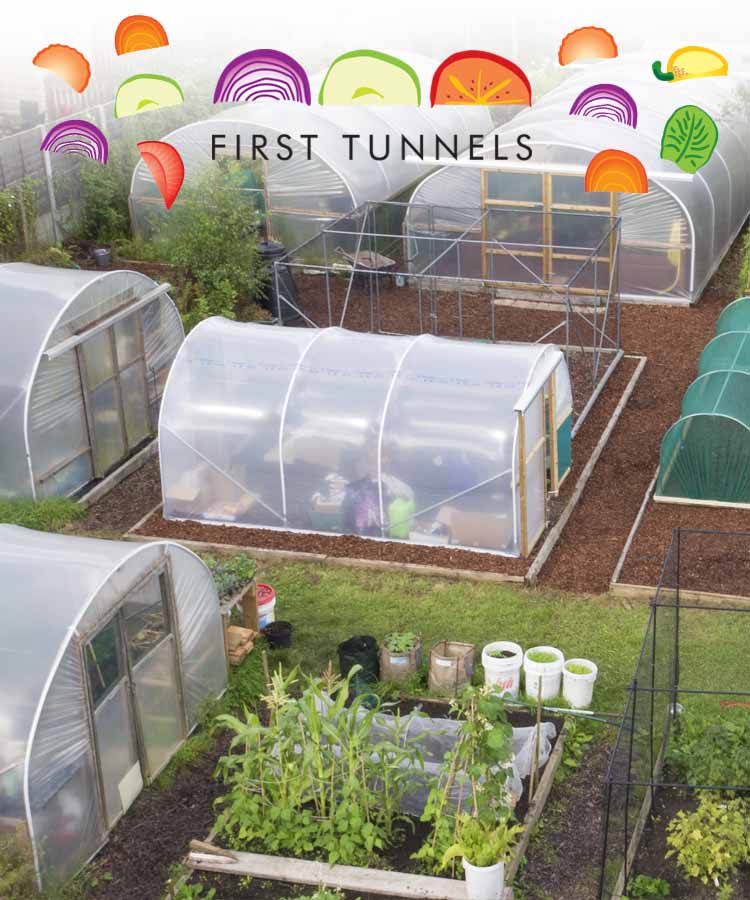Successfully growing plants can be a complex process. Luckily for the gardener, other plants can help us to do our work well. Planting some plants next to others will aid them in a range of different ways and make it easier to create a productive and beautiful organic garden. Placing plants with others that can help them out is sometimes called 'companion planting'. Like we do with a friend or companion in our own lives, plants can thrive with the support of those close to them. Understanding how to combine plants in your polytunnel is key to successful organic gardening.
Dynamic accumulators help other plants by gathering nutrients that can then be made available in the soil. Dynamic accumulators include deep rooted plants such as borage and comfrey that can be chopped and dropped to provide nutrition to neighbours, and nitrogen fixers such as peas and beans. The latter group can add nitrogen to a garden bed and so nitrogen-hungry plants, such as those in the cabbage family for example, can be planted nearby.
Another way in which some plants can be good companion plants is in helping with pest control. Some herbs and flowers will give off scent which will confuse or repel common pests in your polytunnel. Onions and carrots, for example, are good companions because the smell of the other will reduce the risk of pests being drawn to each.
Some plants will not repel or confuse pests but will still help immensely with a pest problem. They can do this by attracting beneficial creatures such as predatory insects, which will eat pests and therefore help to keep everything in balance. Other good companion plants will attract pollinators and so help make sure that fruit set correctly and everything continues to harvest as it should.
The interactions between plants are more complex than most people realise and companion planting is an inexact science. Studies have shown the benefits of some companion planting, while other combinations are less tried and tested and are supported only by anecdotal evidence. Gardeners can undertake their own investigations to see which combinations work best where they live.
Polyculture planting (with multiple plants in the same bed at the same time) can help to improve the resilience and biodiversity of your polytunnel and garden. Regardless of the efficacy of individual interactions, therefore, companion planting is a very good idea.
